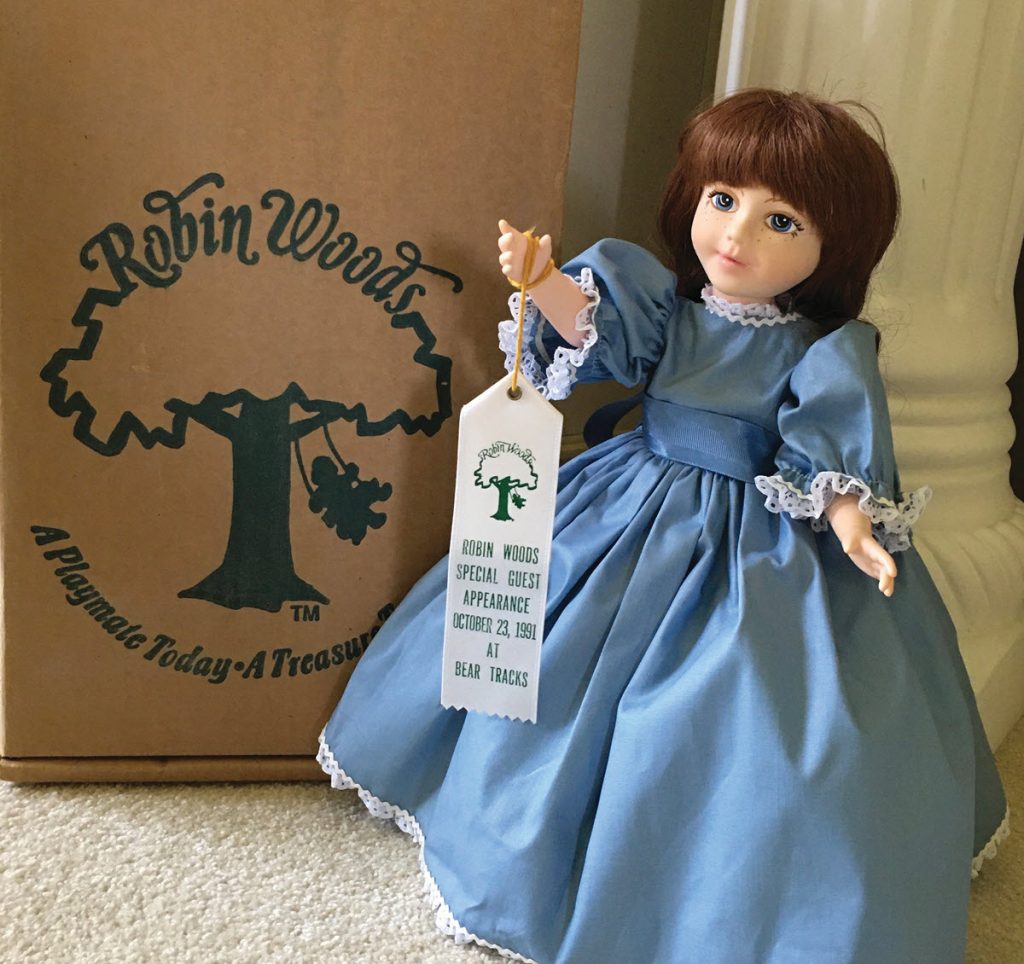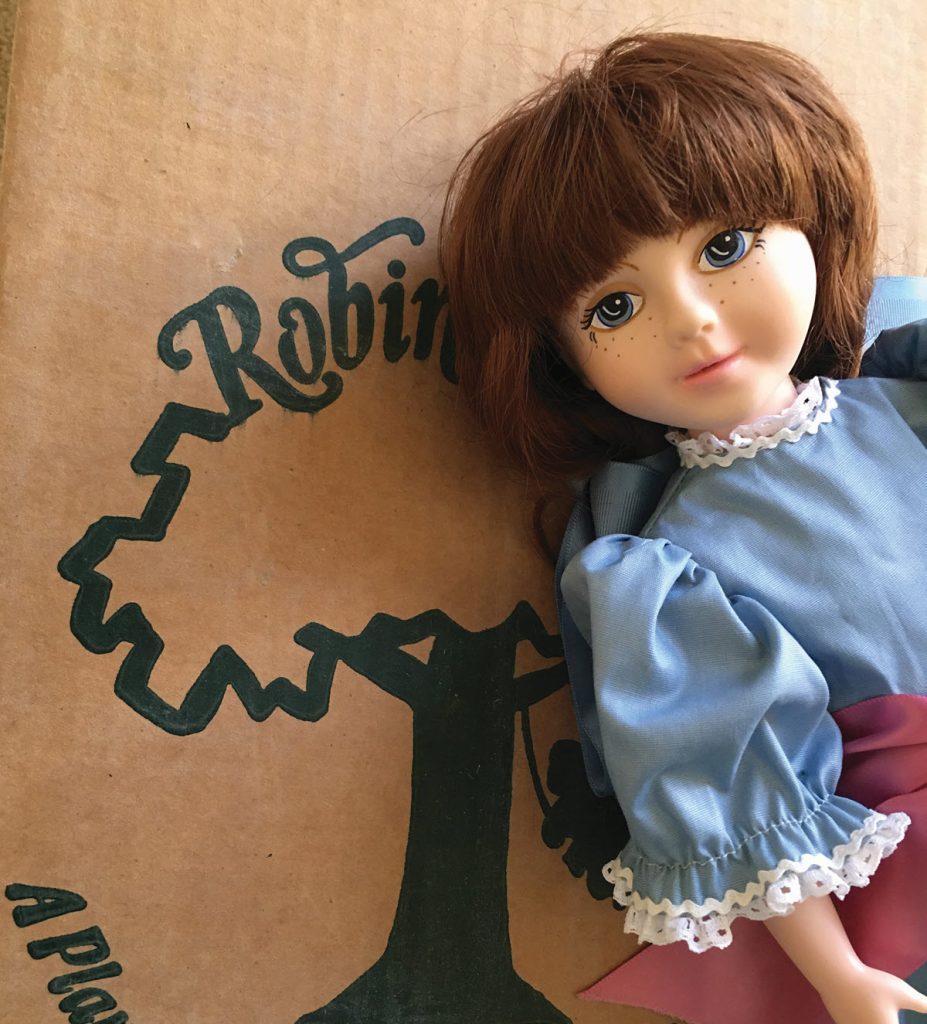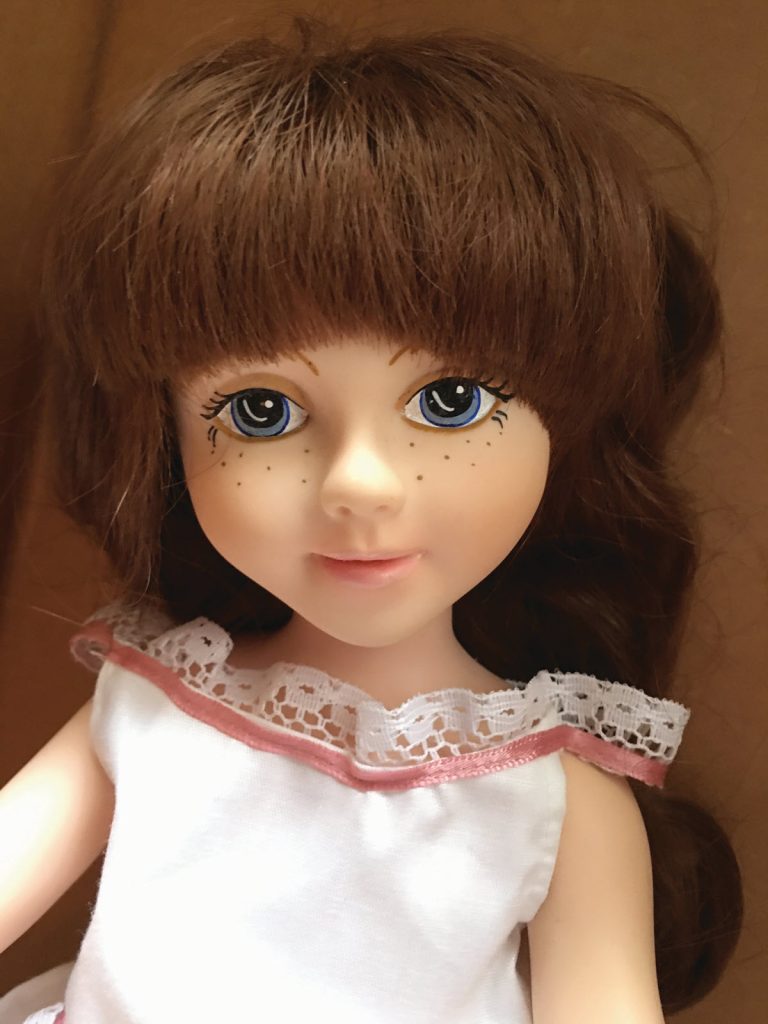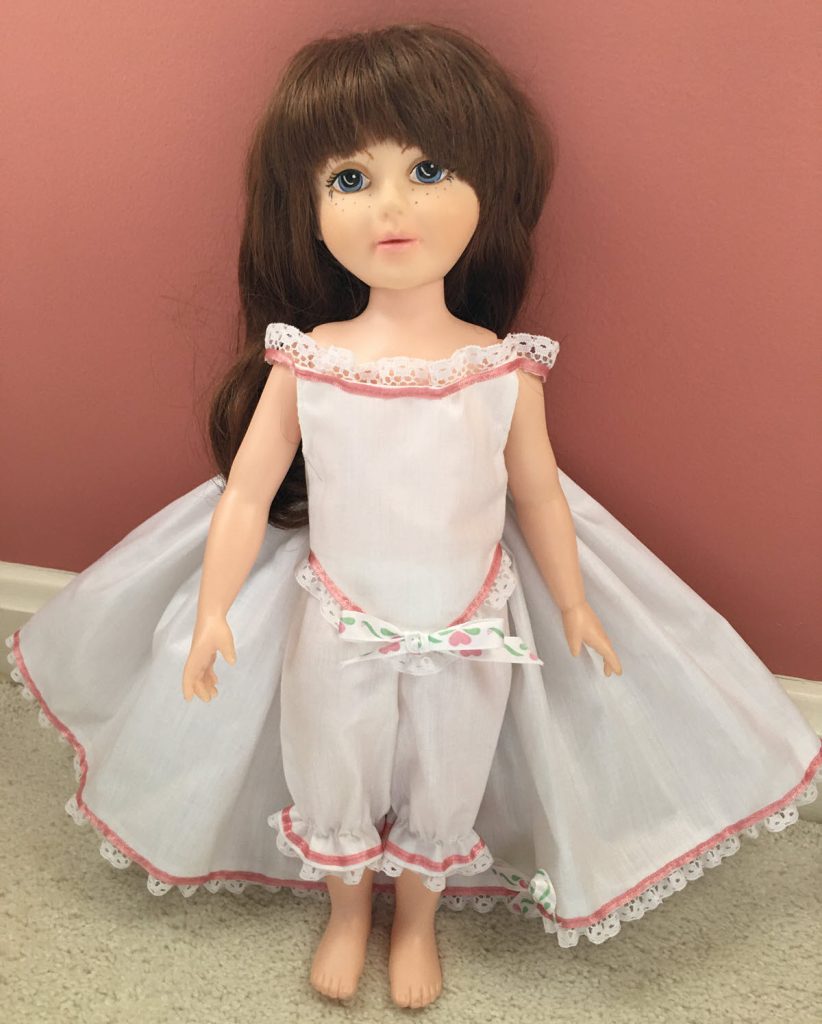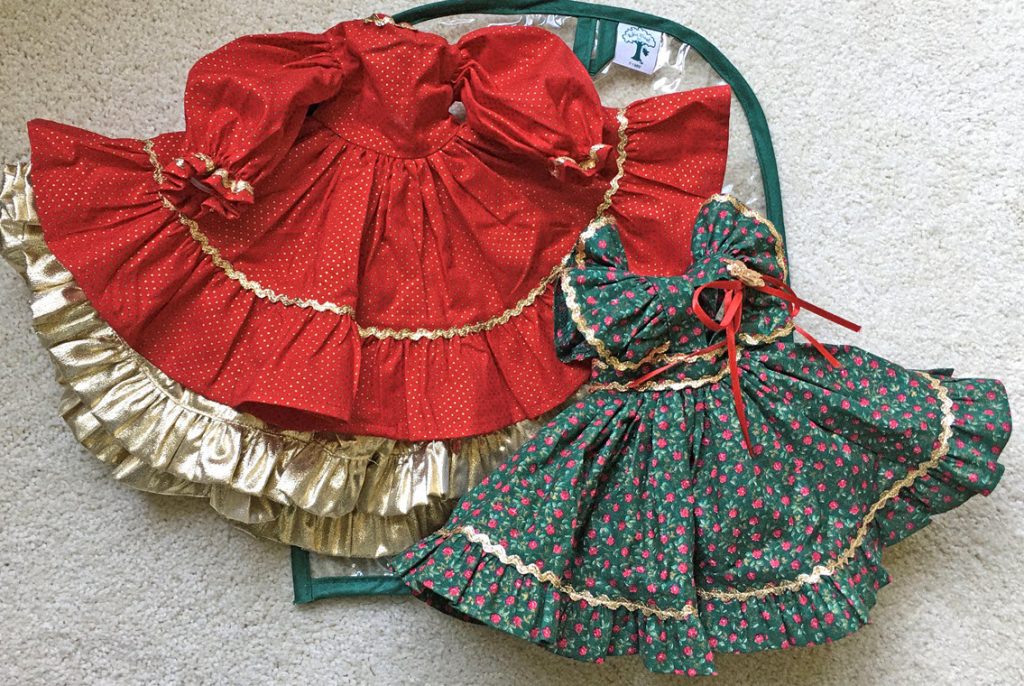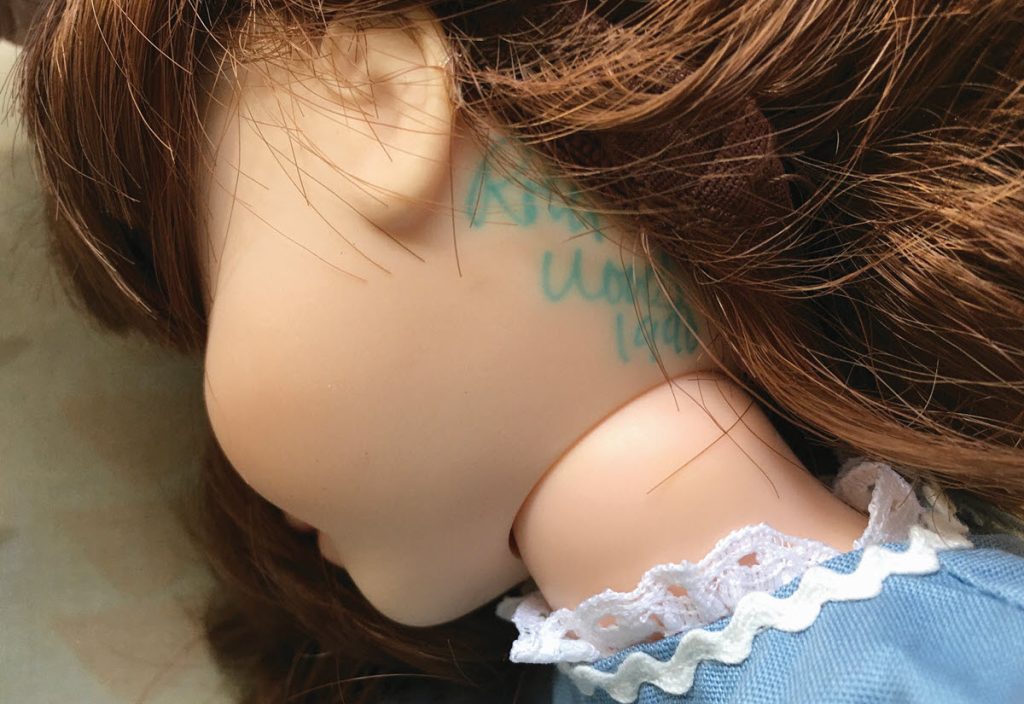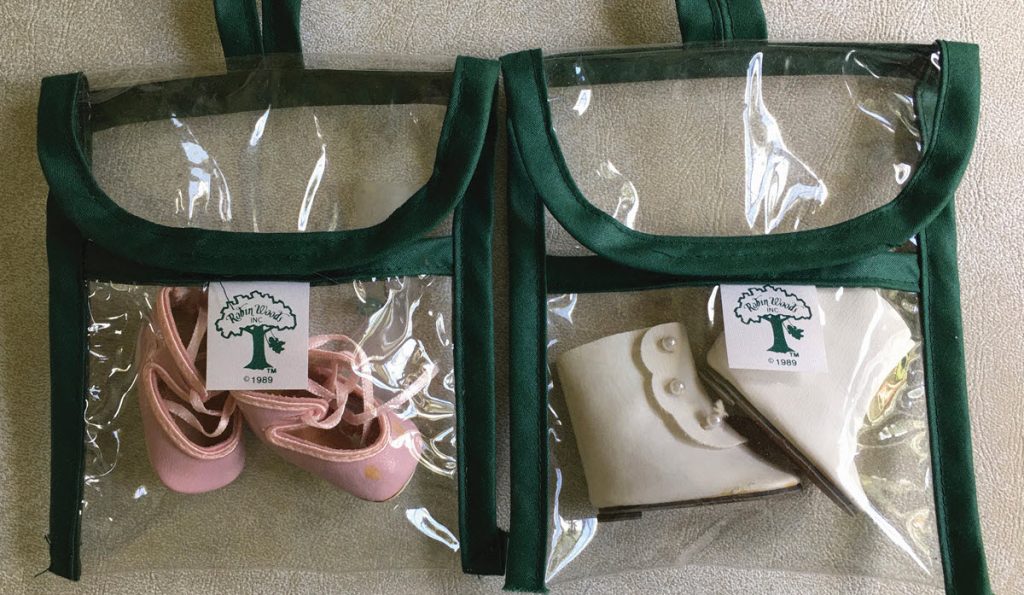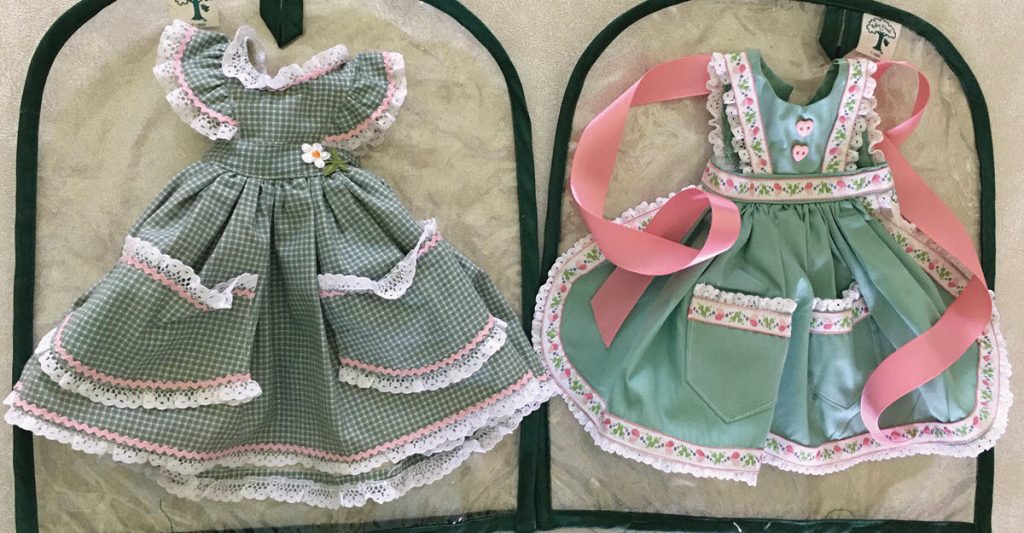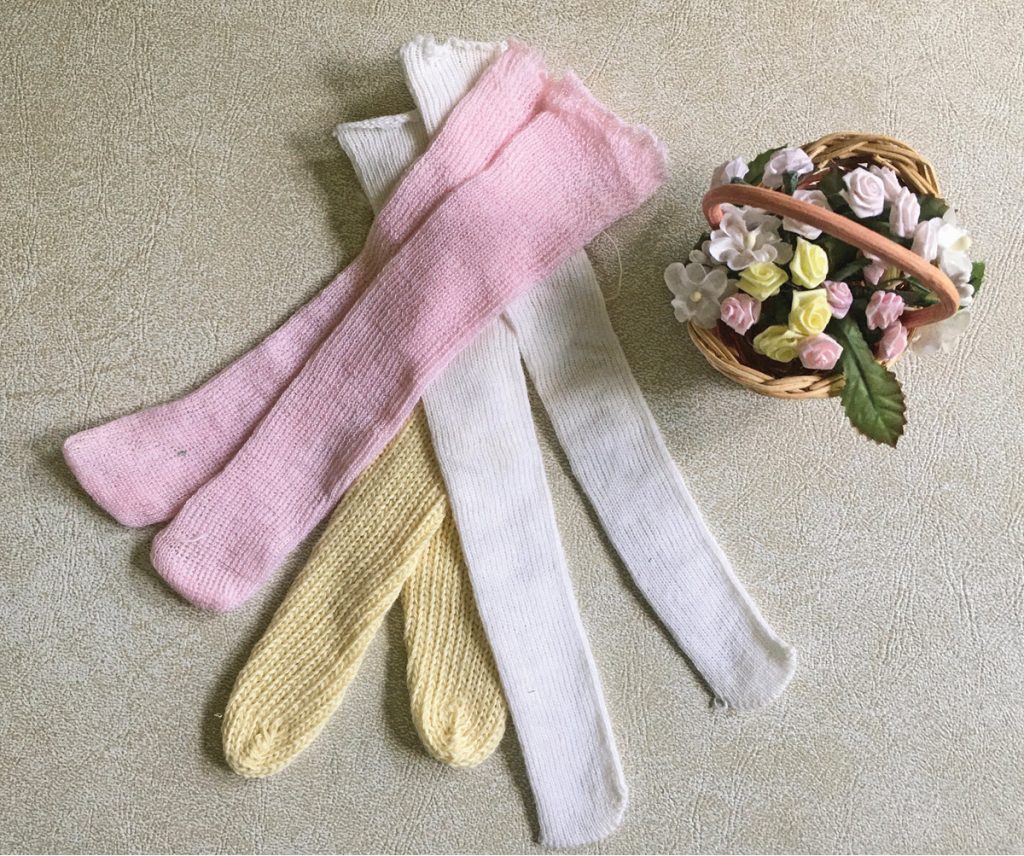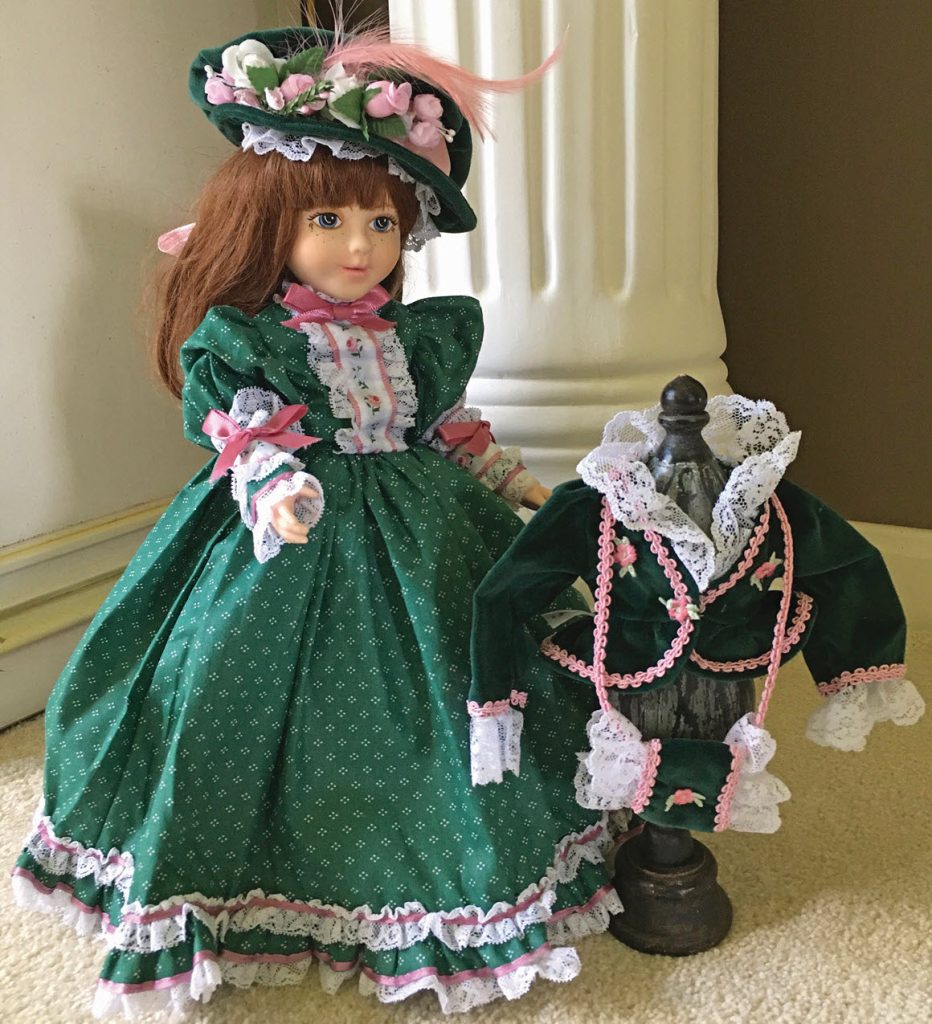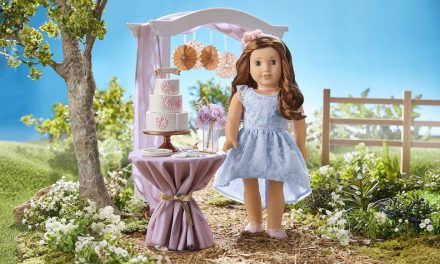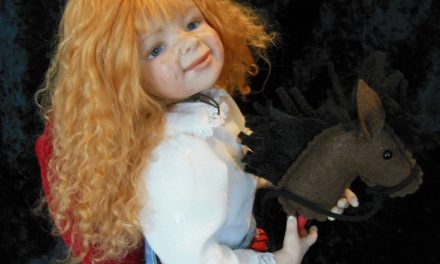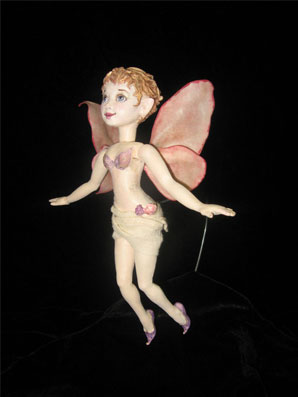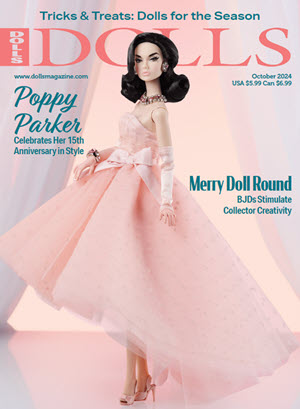By Melanie Luther
One of the things I appreciate most about doll collecting is being able to look back at how my collection came to be what it is today. Attending doll shows, sales, auctions, and conventions, as well as reminiscing with other collectors about “the one that got away” and the ones that built the foundation, has given me hours of enjoyment.
My daughter always loved baby dolls, especially the Cabbage Patch and Lee Middleton type with big, sweet-looking faces and tender, soft bodies that are easily hugged. I, on the other hand, favored (and still do, as an avid collector of antique French fashion) any lady doll with a trousseau and accessories. Years ago, we found common ground in Plain Jane, a precious 14-inch doll designed by dollmaker Robin Woods. Plain Jane is a delightful character doll that dates to the late 1980s and early 1990s. Locally made outside of my hometown of Pittsburgh, Pennsylvania, this doll checked all of the boxes for us both to enjoy!
Plain Jane is a round-faced vinyl doll with a sweetheart chin and barely tinted closed lips that reveal an engaging smile. Her rimmed blue eyes are painted with a crescent of white, somewhat reminiscent of the classic Huret fashion doll of the 1860s. An upturned nose and sprinkled freckles give her a childlike expression. Her vinyl head swivels and is topped off with a lush auburn wig. Her arms and legs are jointed only at the torso, allowing for easy redressing in her various outfits. Plain Jane has separate fingers that are well developed and complete with fingernails. Behind her ear, she is signed by Woods and dated 1990, as this is a limited-edition doll from the American Children collection. She originally retailed for $84.95.
From the few written interviews I was able to locate through my research, I learned Woods was raised in western Texas and her upbringing was influenced by her grandmother, a gifted storyteller. As a child, Woods played with dolls and made their clothing. The dolls allowed her to enter the world of fantasy and express her creativity. She also wrote stories and poetry and was an avid reader.
As an adult, Woods earned a master’s degree in comparative literature and a Ph.D. in child development. The importance of dolls from her youth transferred to the philosophy she shared in her doll artistry and in her marketing catchphrase: “A Playmate Today, A Treasure Tomorrow.” She often included a letter to the new owner of each of her dolls, in which she emphasized the valuable characteristics of dolls. I discovered Woods believed it was important for a doll to bring out and promote a positive emotional response from the new owner, whether it be from a child or the “child” in an adult.
Woods opened her doll factory in 1983 and started with 12 employees. It grew into two factories with over 100 workers in Pittsburgh and Butler, Pennsylvania. By the time her company was 6 years old, Woods had already won multiple Doll of the Year (DOTY) awards from Hobby House Press. The award-winning dolls were Larissa (1986), Catherine (1987), Lady Elaine (1988 Public’s Favorite Premium Priced Fashion), Kate Greenaway (1988, 8 inches), and Tess of the D’Urbervilles (1989).
During her career, Woods created dolls in cloth and vinyl, with sizes ranging from 8 to 25 inches. Her varied collections included: This Is My Country, Childhood Classic Companions, American Children, Camelot Castle, Little Women, Poetry of Childhood, Great Women of the Eras, Storybook, and Ballerinas. She also produced specialty dolls such as Victoria Ann, which was limited to 250 pieces for the Enchanted Doll House. This doll was designed with additional dresses, shoes, a parasol, and a handbag. Her box acted as a bed and included a blanket and pillow. Inside the lid was a full-length pocket to store the accessories. Woods was also well known for her Angel collection and Christmas holiday editions.
The artist designed exclusive accessories for her 14-inch vinyl dolls, including additional dresses and pinafores, boots, shoes, stockings, hats, and more. Her costuming was exceptional, not only for the lush fabrics but also for the elaborate trims and stunning details. The ensembles were awash with color, multilayered overlays, and embellishments. Each was enclosed in a see-through keepsake packet, trimmed in green and labeled with the Robin Woods tree motif and signature phrase.
While describing the basis of her dolls’ clothing, Woods identified that the fabrics — mainly cotton, taffeta, satin, and lace — could be dry-cleaned or laundered. This was in keeping with her intention to create dolls and clothing that children could enjoy playing with and still preserve for the future.
At some point in her career, Woods resigned as president of Robin Woods, Inc., but stayed on as chair of the board. She continued as a doll artist and began designing for Horsman. Woods also designed under the name Alice Darling for Madame Alexander.
Learning that Woods was such an enterprising doll artist has given me a greater appreciation for her dolls. Her creativity and designs for doll clothing and accessories have created a rich and varied legacy that began over 40 years ago. Today, Robin Woods dolls hold a special place in collectors’ hearts as treasures, just as she meant for them to be!

